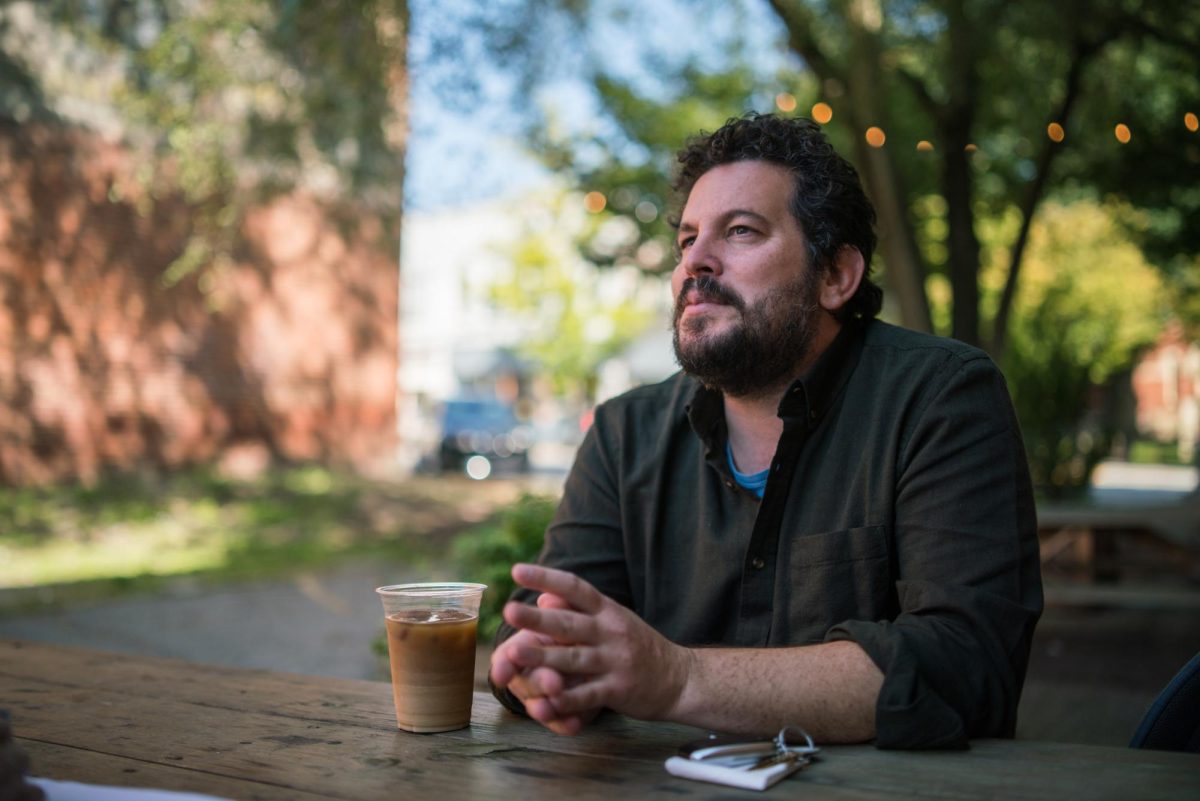Hal Sundt, OC ’12, is a visiting assistant professor of Writing and Communication. He received his MFA from Columbia University. His work has appeared in The New York Times Magazine, The Ringer, The American Scholar, and other publications. His article “Pythons of the Everglades” was recognized as a “Notable” selection in The Best American Science and Nature Writing 2021. He has recently published his first book, Warplane: How the Military Reformers Birthed the A-10 Warthog.
This interview has been edited for length and clarity.
Can you tell me a bit about your life, your career in journalism, and how you got to where you are today?
When I got to college, I took a 100-level writing course because I wanted to get better and feel more confident in writing. And in that class, we read a piece that I later learned was what we would call literary journalism. And I was like, “such an interesting way to want to learn about something is to just dive in headfirst.” When you’re in grad school, you’re writing lots of stories. Right after I graduated, I was like, “Okay, I gotta keep writing.” I had gotten really interested in a genre of writing called participatory journalism. It’s basically like, there’s a world you want to learn about, and so you join that world. I learned that there was a thing called the National Beard and Mustache Championships. I was like, “why would anybody compete in that?” The way I figured I would answer the question is, “Okay, well, I’ll compete in it.” And so I grew this enormous beard over like nine months and wrote about this experience.
How did you decide to write about the A-10 Thunderbolt II, which is the focus of your book?
There were a lot of talks about how this airplane, the A-10, was going to be retired, and there was a lot of controversy because people were saying, “Well, hey, this airplane is really great. It’s really durable. It’s really well-designed. It’s really cheap. So why are we retiring it?” I wanted to understand that controversy a bit more, and I was like, it feels like there’s a story here. For me, what makes a compelling story is there has to be tension. And to me, one of the initial tensions was, hey, if this thing’s really well designed, and it’s still working, why do we want to replace it? Then I wondered if the person who’s largely responsible for its design is still around, like this airplane.
I emailed him cold. It just turned out he had retired from working in the Pentagon, and now he owned a recording studio. His name’s Pierre Sprey. He was working in the Pentagon at the height of the Cold War. And so the story just kept getting bigger. This isn’t just a story about an airplane. This is a story about this remarkable group of individuals who were championing human-centered design.
What was your process for researching and writing the book?
I reached out to Pierre, and then he started connecting me with more folks to talk to. Because I had him vouching for me, these other people would agree to speak with me, and then they would put me in touch with folks, and this story kept unfurling. So it was a bit overwhelming for a while because there’s just so much to keep track of.
I came up with a theory that the A-10 is like the Forrest Gump of airplanes, I feel like its story coincides with all these other moments in history and innovation and technology. As I had to tell the story of its design, I had to learn the history of how the Air Force came to be. When did airplanes first start being used in war? Why did we start using them? How were all these figures connected to all these important developments in aviation?
Could you tell me more about the subject matter of the book?
The A-10 itself was first conceived of as an idea in the late ’60s, because there wasn’t an airplane that could perform what’s called close air support, which is to fly low to the ground and support troops. It wasn’t exactly the most exciting thing to design a really slow airplane at a time when we were putting people on the moon: we were designing airplanes that could go three times the speed of sound. This airplane can barely fly slower than a commercial airliner.
The whole reason that A-10 has this really big gun is it needs something to destroy tanks effectively and cheaply. So once they had a gun, the GAU-8/A Avenger, they built an airplane around it, which is kind of this ingenious design principle. A lot of times, guns were added to airplanes after the fact.
Pierre was like, “We need to study how airplanes have gotten damaged in the past so that we know how to make this thing not indestructible but survivable.” This was the philosophy of human-centered design. They wanted the engines mounted high as opposed to low to the ground so that they could take off from dirt roads. It has turbine engines, which had the benefit of not being a jet engine, which can go really fast but are very fragile. When the wheels retract up into the airplane, they actually still poke out of the bottom a little bit so that if there’s a problem where they can’t lower, the airplane can still land. If something shoots the wiring and eliminates the hydraulics, the plane can still remain in flight due to a mechanism called manual reversion, which is pretty rare. It’s not designed idealistically; it’s designed realistically. It’s designed with the expectation that chaos is unavoidable. Accidents will happen, and things will go wrong.
Could you tell me about the public perceptions of the A-10?
Very early on in my writing process, I was deciding that I wanted to write about this thing. I had to reckon with the fact that I’m writing about design, but fundamentally, I’m writing about a weapon, and what I did not want to do in any way was glamorize a weapon or glamorize violence. The A-10 inspires a lot of fandom for a lot of positive reasons; it has saved a lot of lives. But there are also less savory opinions that essentially glamorize its violence. And I did not want to do that. I thought about that really long and hard, and the justification I came to early on is that the A-10 is really ugly. You’ll see all these images of A-10s that land, and they’re filled with bullet holes and oil, grease, and all of that. There are some observers who could see that and think that’s awesome. However, I think the more discerning observer will see an A-10 and realize this thing has experienced and participated in this tragic, horrific thing that is war. The really sleek fighter jets present a sinister illusion of war that may seem sterile. There is nothing sterile about the A-10. It doesn’t hide its purpose or what it’s participated in. I think that it’s important that it doesn’t hide that because it forces the viewer to reckon with what it does. And so I think that to me, the A-10 in the public consciousness, there’s one view that sees it in a not-so-serious way. But I think a lot of folks who are devoted to the A-10 are devoted to it because they are aware of its purpose and its job and the responsibility of that and the difficulty of performing that job.












